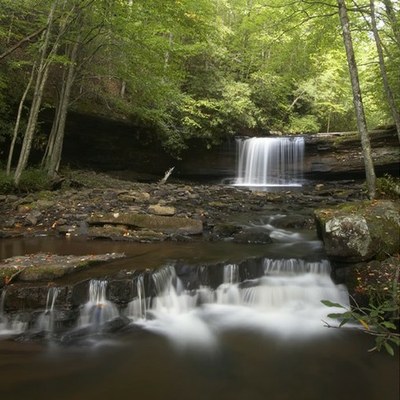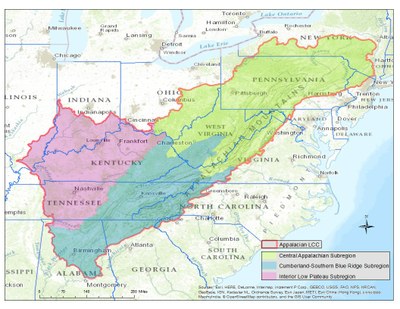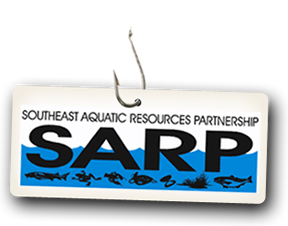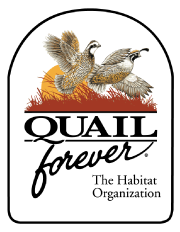Spotlight Posters on National Park Resources
Riparian Restoration to Promote Climate Change Resilience Research Update
Riparian Restoration to Promote Climate Change Resilience Tool Tutorial from Ferguson Lynch on Vimeo.
Riparian Restoration to Promote Climate Change Resilience Tool
Riparian Restoration to Promote Climate Change Resilience Tool - Read More…
Integrating Cultural Resource Preservation at a Landscape Scale
Integrating Cultural Resource Preservation at a Landscape Scale - Read More…
Environmental Flows from Water Withdrawals in the Marcellus Shale Region
 The Appalachian LCC provided a grant to Cornell University Environmental Engineers to study how the region’s surface freshwater supply – and the health of natural systems delivering this resource – have been impacted and may be altered in the coming years under increasing water withdrawals.
The Appalachian LCC provided a grant to Cornell University Environmental Engineers to study how the region’s surface freshwater supply – and the health of natural systems delivering this resource – have been impacted and may be altered in the coming years under increasing water withdrawals.
The research focuses on the Marcellus Shale region in the Central Appalachians, including portions of New York, Pennsylvania, Ohio, Maryland, West Virginia, and Virginia. In addition to considering the cumulative impacts of water withdrawals, the researchers looked at specific impacts of large water withdrawals with hydraulic fracturing in the Marcellus Shale region as one example.
The study attempts to answer these key questions:
- What are the observed impacts on freshwater fish communities and ecosystems associated with current levels of water withdrawals?
- What might those impacts look like under a range of potential water withdrawal scenarios?
- Is it possible, using sophisticated computer modeling techniques, to identify different flow regimes that deliver a more balanced approach for regulating water withdrawals to meet human demands and sustain healthy ecosystems?
The overall goal of this research is to provide new information to help resource managers, industry and others make more informed decisions in achieving sustainable river and stream flows that balance the needs of society and healthy ecosystems. Information could also be beneficial for early project design and planning as well as setting a foundation for discussions about associated biological and ecological effects.
View a video presentation by Dr. Todd Walter, Professor of Biological and Environmental Engineering at Cornell University, and Brian Buchanan, Post-doctoral Researcher at Cornell University, which provides a brief overview of this study's background, findings, and major products.
Scientific Research Papers Associated with this Collaborative Research
- Environmental flows in the context of unconventional natural gas development in the Marcellus Shale. Brian P. Buchanan, Daniel A. Auerbach, Ryan A. McManamay, Jason M. Taylor, Alexander S. Flecker, Josephine A. Archibald, Daniel R. Fuka, and M. Todd Walter. 2016 Ecological Applications, 27(1), 2017, pp. 37–55.
Assessing Vulnerability of Species and Habitats to Large-scale Impacts: CCVA
 The Appalachian region is rich in biodiversity that is highly threatened by energy production, development, and a host of other factors. Large-scale impacts such as climate change will play out within this context, affecting habitats and species in different ways. Understanding the vulnerability of various species and habitats within the Appalachian LCC to such changes is of critical importance. Identifying the steps needed to acquire vulnerability information and then using this information to inform adaptation and mitigation strategies is a major research priority of the LCC.
The Appalachian region is rich in biodiversity that is highly threatened by energy production, development, and a host of other factors. Large-scale impacts such as climate change will play out within this context, affecting habitats and species in different ways. Understanding the vulnerability of various species and habitats within the Appalachian LCC to such changes is of critical importance. Identifying the steps needed to acquire vulnerability information and then using this information to inform adaptation and mitigation strategies is a major research priority of the LCC.
The Appalachian LCC provided a grant to NatureServe to conduct critical vulnerability assessments. Researchers first convened a panel of experts to compile and review existing vulnerability assessments, compare strengths and weaknesses of methodologies used, and recommend a vulnerability assessment method for adoption. The recommended method was then deployed to generate vulnerability assessments for a suite of key species and habitats selected in consultation with partners of the Cooperative. The completed assessments are now on the Web Portal, where users can view and search by vulnerability scores, conservation status ranks, state and subregion of assessment, and higher taxonomy.
In the presentations below, Dr. Lesley Sneddon of NatureServe gives an in-depth overview of this research. The bulk of the presentations provide viewers with step by step instructions on how to access, utilize, and interpret the many vulnerability assessments for species and habitats - both previous assessments that were assembled by the research team and new assessments that were developed for this project.
|
PHASE 1In 2012, the LCC tasked NatureServe with a two-phase project that provided the LCC with: guidance on the most appropriate climate change vulnerability approaches; compilation of the existing assessments, of which there are many; and conducting new assessments where they're needed.
|
|
The first order of business was to assemble a panel of experts to provide guidance on selecting the approaches, identifying the appropriate climate data, and providing criteria to help select species and habitats that need to be assessed. |
|
The panel convened a two-day working session at NatureServe's Arlington office to discuss this and document their findings and the recommendations. You can find the result of their work in the PDF document titled Understanding Land Use and Climate Change in the Appalachian Landscape: Phase I. The following Videos will walk you through the Assessing Vulnerability of Species and Habitats to Large-scale Impacts Toolkit
PHASE 2 |
LanDAT Map Viewer
AppLCC Partnership Dashboard
Executive Summary - Present and Future Possibilities of Landscape Scale Conservation
Publication Date: 2018
DOWNLOAD FILE — PDF document, 118 kB (121,339 bytes)
The Present and Future Possibilities of Landscape Scale Conservation: AppLCC Ethnographic Study Video of Presentation
Landscape Conservation Fellowship
Cultural Landscapes
Presentation by Maddie Brown - Research Results - Partnership
Publication Date: 2018
DOWNLOAD FILE — PDF document, 83,716 kB (85,725,359 bytes)
Partner Interviews
Information on the AppLCC Fellowships
Funding Opportunities
National Fish Habitat Partnerships
National Fish Passage Program RFP
In FY17 an emphasis will be placed on strategic decisions and projects that lead to greater restoration benefits for surrogate or other priority species. This year we will continue to develop new tools to refine this process, but in the interim we will rely generally on the criteria below to guide decision making (percentages indicate relative importance to the overall selection effort):
- How does this project address FWS priorities?
- How does this project address Partner priorities?
- What are the anticipated benefits to the larger watershed or restoration focus area?
- What is the cost per unit benefit (e.g. cost per mile of stream reconnected) of this project?
- What is the probability of completion of this project within 1 and 2 years of receiving funding?
Ohio River Basin Fish Habitat Partnership
ORBFHP is currently accepting proposals for the Ohio River Basin Fish Habitat Partnership to fund aquatic habitat projects within the Ohio River Basin. The Request for Proposals (RFP) is an online application and can be found at the Midwest Fish Habitat Partnerships website, linked above. Click on “Apply for Project Funding” on the home page and then again on the “Apply for Project Funding” link on the upper left side of the page. Proposal instructions, a pdf of the proposal questions, and additional information are found in the attached documents as well as at the bottom of the “Apply for Funding” page.
NAWCA Small Grants Program
The Small Grants Program is a competitive, matching grants program that supports public-private partnerships carrying out projects in the United States that further the goals of the North American Wetlands Conservation Act. These projects must involve long-term protection, restoration, and/or enhancement of wetlands and associated uplands habitats for the benefit of all wetlands-associated migratory birds.
Eastern Brook Trout Joint Venture
National Fish Habitat Action Plan Funding
The Eastern Brook Trout Joint Venture is requesting project proposals to restore and conserve habitat necessary to support healthy and productive populations of brook trout. National Fish Habitat Action Plan funding administered by the U.S. Fish and Wildlife Service (Service) will be allocated to top ranked proposals. The maximum award amount for an individual project is $50,000. All proposed projects must be developed in coordination with the nearest Service Sponsoring Office. A list of these offices by state can be found with the application materials on the EBTJV website under the Funding tab.
NOAA
NOAA's Climate Program Office (CPO) supports competitive research through four major Programs: Climate Observations and Monitoring (COM); Earth System Science (ESS); Modeling, Analysis, Predictions, and Projections (MAPP); and Climate and Societal Interactions (CSI). Through this Announcement, CPO's Programs are seeking applications for 10 individual competitions in FY 2015. Prior to submitting applications, investigators should be familiar with CPO and its specific Program priorities for FY15. This information, along with the names and contact information of relevant Competition Managers, is provided in Program information sheets below. We estimate that $15.5 million will be available through this Announcement in FY 2015 for approximately 100 new awards pending budget appropriations. It is anticipated that most awards will be at a funding level between $50,000 and $200,000 per year, with some exceptions for larger awards. Investigators should visit the CPO website http://cpo.noaa.gov/GrantsandProjects.aspx for more detailed information and instructions prior to submitting applications.
U.S. Fish and Wildlife Service
U.S. Neotropical Migratory Bird Conservation Act Grant
The United States Neotropical Migratory Bird Conservation Act established an annual, competitive grants program to support projects that promote the conservation of neotropical migratory birds and their habitats in the United States, Canada, Latin America and the Caribbean.
Endangered Species Program
A variety of tools are available under the Endangered Species Act (ESA) to help States and landowners plan and implement projects to conserve species. One of the tools, the Cooperative Endangered Species Conservation Fund (section 6 of the ESA) provides grants to States and Territories to participate in a wide array of voluntary conservation projects for candidate, proposed, and listed species. The program provides funding to States and Territories for species and habitat conservation actions on non-Federal lands. States and Territories must contribute a minimum non-Federal match of 25 percent of the total program costs, or 10 percent when two or more States or Territories implement a joint project. A State or Territory must currently have, or enter into, a cooperative agreement with the Secretary of the Interior to receive these grants.
State Wildlife Grant Program
The State Wildlife Grants Program provides federal grant funds for developing and implementing programs that benefit wildlife and their habitats, including species not hunted or fished. Priority is placed on projects that benefit species of greatest conservation need. Grant funds must be used to address conservation needs such as research, surveys, species and habitat management, and monitoring, identified within a State’s Comprehensive Wildlife Conservation Plan/Strategy. These funds may also be used to update, revise, or modify a State’s Strategy. Proposals accepted throughout the year.The Small Grants Program is a competitive, matching grants program that supports public-private partnerships carrying out projects in the United States that further the goals of the North American Wetlands Conservation Act. These projects must involve long-term protection, restoration, and/or enhancement of wetlands and associated uplands habitats for the benefit of all wetlands-associated migratory birds.
Natural Resources Conservation Service
Agriculture Conservation Easement Program
Provides financial and technical assistance to help conserve agricultural lands and wetlands and their related benefits. Under the Agricultural Land Easements component, NRCS helps Indian tribes, state and local governments and non-governmental organizations protect working agricultural lands and limit non-agricultural uses of the land. Under the Wetlands Reserve Easements component, NRCS helps to restore, protect and enhance enrolled wetlands. Land eligible for agricultural easements includes cropland, rangeland, grassland, pastureland and nonindustrial private forest land. NRCS will prioritize applications that protect agricultural uses and related conservation values of the land and those that maximize the protection of contiguous acres devoted to agricultural use. ACEP is a new program that consolidates three former programs – the Wetlands Reserve Program, Grassland Reserve Program and Farm and Ranch Land Protection Program.
Voluntary Public Access and Habitat Incentive Program
Recipients of the Voluntary Public Access and Habitat Incentive Program can use the grant funding to create new or expand existing public access programs. These programs provide financial incentives or technical assistance, such as rental payments or wildlife habitat planning services, to owners and managers who allow public access.
Funding priority will be given to applications that propose to:
- Maximize private lands acreage available to the public;
- Ensure that land enrolled in the program has appropriate wildlife habitat;
- Strengthen wildlife habitat improvement efforts;
- Supplement funding and services from other federal or state agencies, tribes or private resources; and
- Provide information to the public about the location of public access land.
Regional Conservation Partners Program
Through this Request for Proposals (RFP), Conservation Partners will fund organizations to partner with NRCS field offices to deliver technical assistance for high priority conservation objectives. Conservation Partners is a collaborative effort between the U.S. Department of Agriculture’s Natural Resources Conservation Service, the National Fish and Wildlife Foundation, and other regional/initiative-specific partners. The purpose of the partnership is to provide grants on a competitive basis to:
- Increase technical assistance capacity to implement three programs: NRCS’s Landscape Conservation Initiatives, NFWF’s Keystone Initiatives, and the NRCS-U.S. Fish and Wildlife Service partnership – Working Lands for Wildlife.
- Maximize benefits to the three programs listed above within certain identified Program Priority Areas (PPAs).
Environmental Quality Incentives Program
The Environmental Quality Incentives Program (EQIP) is a voluntary program that provides financial and technical assistance to agricultural producers through contracts up to a maximum term of ten years in length. These contracts provide financial assistance to help plan and implement conservation practices that address natural resource concerns and for opportunities to improve soil, water, plant, animal, air and related resources on agricultural land and non-industrial private forestland. In addition, a purpose of EQIP is to help producers meet Federal, State, Tribal and local environmental regulations.
Working Lands for Wildlife
Working Lands for Wildlife is a new partnership between NRCS and the U.S. Fish and Wildlife Service (FWS) to use agency technical expertise combined with $33 million in financial assistance from the Wildlife Habitat Incentive Program to combat the decline of seven specific wildlife species whose decline can be reversed and will benefit other species with similar habitat needs. Through Working Lands for Wildlife landowners can voluntarily participate in an incentive-based efforts to:
- Restore populations of declining wildlife species.
- Provide farmers, ranchers, and forest managers with regulatory certainty that conservation investments they make today help sustain their operations over the long term.
- Strengthen and sustain rural economies by restoring and protecting the productive capacity of working lands.
Conservation Innovation Grants
Conservation Innovation Grants (CIG) is a voluntary program intended to stimulate the development and adoption of innovative conservation approaches and technologies while leveraging Federal investment in environmental enhancement and protection, in conjunction with agricultural production. Under CIG, Environmental Quality Incentives Program funds are used to award competitive grants to non-Federal governmental or nongovernmental organizations, Tribes, or individuals. CIG enables NRCS to work with other public and private entities to accelerate technology transfer and adoption of promising technologies and approaches to address some of the Nation's most pressing natural resource concerns. CIG will benefit agricultural producers by providing more options for environmental enhancement and compliance with Federal, State, and local regulations.
Conservation Stewardship Program
The Natural Resources Conservation Service’s Conservation Stewardship Program (CSP) will provide about $175 million in funding for up to 12.6 million additional acres enrollment this year. The voluntary program allows producers to go the extra mile in conserving natural resources while also maintaining or increasing the productivity of their operations. CSP is available on Tribal and private agricultural lands and non-industrial private forest land in all 50 States and the Caribbean and Pacific Islands Areas. The program provides equitable access to all producers, regardless of operation size, crops produced, or geographic location.
Wildlife Conservation Society
NIACS is a partner on several adaptation projects that were recently funded by the Wildlife Conservation Society's Climate Adaptation Fund. The Fund is supported by a grant from the Doris Duke Charitable Foundation and awards innovative on-the-ground climate change adaptation projects. Funded projects in New England are being led by the American Forest Foundation(CT/MA), Trout Unlimited (MA/VT), and The Nature Conservancy (ME). They use climate change vulnerability assessments published by the Northern Research Station and serve as real-world adaptation demonstration projects for the Climate Change Response Framework.
The Climate Adaptation Fund is currently soliciting proposals for shovel-ready adaptation projects in 2016!
National Fish and Wildlife Foundation
Early Successional Forest
Early Successional Forest Initiative focuses on establishing viable populations of the American Woodcock, Golden-winged Warbler, and some two dozen additional imperiled species that nest in young, regenerating forests in eastern North America. Cost-effective, ecologically sound habitat creation and enhancement in key bird conservation regions is the primary goal of this program. Conservation planning for these species in both North America and in the Neotropics (the birds’ wintering grounds) is also a priority. These actions are being supported through a competitive grants program administered by NFWF and implemented by federal and state governments, non-governmental organizations, and academic institutions.
Longleaf Stewardship Fund
The Longleaf Stewardship Fund expands on longleaf restoration efforts across the nine states within longleaf pine’s historic range. It is a landmark public-private partnership that includes the U.S. Department of Defense, the U.S. Forest Service, the U.S. Fish and Wildlife Service, the Natural Resources Conservation Service and Southern Company. Funding priorities for this program include:
- Restoring the longleaf pine ecosystem through collaborative and result-oriented actions that help advance the goals of the Range-Wide Conservation Plan for Longleaf Pine
- Maintaining, enhancing and expanding productive understory habitat of the Longleaf Pine ecosystem
- Aiding federal agencies in achieving their mission-oriented objectives
- Supporting the recovery of iconic species through habitat enhancements
- Strengthening the capacity of local organizations to establish, advance and/or lead local longleaf pine ecosystem restoration efforts
- Expanding the number of landowners engaged in longleaf pine restoration and maintenance on private lands.
Forestland Stewards
The program will establish protected wildlife corridors between existing hubs of forestland and assist landowners in improving management practices to enhance the economic and ecological functions of working forests. Forestland Stewardswill launch conservation projects in three regions: the low country of North and South Carolina, the Cumberland Plateau of Tennessee and Alabama, and the piney woods on the Louisiana-Texas border. International Paper has 28 facilities located in these regions, affording IP employees an opportunity to participate in hands-on conservation work in their local areas.
Association of Fish & Wildlife Agencies
Multistate Conservation Grant Program
The Multistate Conservation Grant Program provides funding for wildlife and sport fish restoration projects identified as priority projects by the Association of Fish and Wildlife Agencies (AFWA). These high priority projects address problems affecting states on a regional or national basis. Project types that are generally selected for funding are: biological research/training, species population status, outreach, data collection regarding hunter/angler participation, hunter/aquatic education, economic value of fishing/hunting, and regional or multistate habitat needs assessments. States, groups of states, U.S. Fish and Wildlife Service and non-governmental organizations may apply for MSCGP grants by contacting AFWA or apply online at grants.gov.
Office of Surface Mining Reclamation and Enforecement
Abandoned Mine Land Grants
More than $298 million is available in Fiscal Year (FY) 2014 to states and tribes to reclaim abandoned coal mines. Funded in part by a fee collected on all coal produced in the United States, the 2014 Abandoned Mine Land (AML) grants enable 28 eligible states and tribes to help eliminate dangerous conditions and pollution caused by past coal mining. AML-funded projects include closing dangerous mine shafts, reclaiming unstable slopes, improving water quality by treating acid mine drainage, and restoring water supplies damaged by mining. The AML funds that OSMRE provides also support vitally needed well-paying jobs for communities in coal country.
Additional Funding
Open Space Institute: Southeast Resilient Landscapes Fund
Capitalized with a grant from the Doris Duke Charitable Foundation, the Southeast Resilient Landscapes Fund (Fund) provides capital grants and loans to land protection projects within three selected regions of the southeast. Projects must lie in one of OSI’s resilience focus areas, demonstrate the use of Resilient Landscape concepts and meet the other grant criteria detailed below. OSI awards grants to qualified non-profit organizations through a competitive process with the assistance of an advisory board comprised of experts with knowledge of natural resources, conservation policy and land conservation funding. Through an in-depth review process, OSI has selected three focus areas: the Southern Cumberlands in Alabama, Georgia and Tennessee; the Southern Blue Ridge in North Carolina, South Carolina and Tennessee; and the Greater Pee Dee River in South Carolina and North Carolina.
Land and Water Conservation Fund
Provides money to federal, state and local governments to purchase land, water and wetlands for the the benefit of all Americans. From majestic forests and snowcapped mountains, to wild rivers and stunning beaches, these acquisitions become part of your national forests. Lands and waters purchased through the LWCF are used to:
- Provide recreational opportunities
- Provide clean water
- Preserve wildlife habitat
- Enhance scenic vistas
- Protect archaeological and historical sites
- Maintain the pristine nature of wilderness areas
Land is bought from landowners at fair-market value (unless the owner chooses to offer the land as a donation or at a bargain price). The Fund receives money mostly from fees paid by companies drilling offshore for oil and gas. Other funding sources include the sale of surplus federal real estate and taxes on motorboat fuel.
Southern Cumberland Land Protection Fund
Second round of funding through the Southern Cumberland Land Protection Fund, which will award grants and loans to conservation projects protecting habitat that facilitates wildlife adaptation to changes in climate and other environmental factors. funding will be focused on permanently protecting large forest blocks in the Southern Cumberland Plateau in portions of Alabama, Tennessee and Georgia that have been identified as a high priority in recognized wildlife habitat and landscape conservation plans, including but not limited to state wildlife action plans and OSI’s recent research project, Protecting Southern Appalachian Wildlife in an Era of Climate Change. OSI will make loans and grants to qualified organizations for land acquisition through a competitive process that is guided by an advisory board comprised of experts within the region who are knowledgeable about natural resources, conservation planning, philanthropy, land transactions and policy.
Integrating Cultural Resource Preservation at a Landscape Level
The goals of this research is to address the threats of land-use conversion associated with energy expansion, urbanization, sprawl, and climate change on cultural resources that society values. In order to integrate cultural resources into landscape-scale conservation planning and design, researchers at Penn State University will first identify relevant resources and data requirements, while investigating issues of scale and data availability appropriate for spatial analysis and modeling. They will then identify a process appropriate to apply at the larger scale, moving from a single state to include the entire Appalachian LCC 15-state geography.
Integrating cultural resource priorities within landscape-level planning and modeling is foundational to the LCC's Landscape Conservation Design, which will guide the Cooperative's coordination and collaborative conservation actions over the next several years.
In-depth presentation from the research team on first completing pilot studies in Pennsylvania and West Virginia. The team investigated relevant resources, data requirements, and opportunities to identify the best process for integrating cultural resources into landscape planning. Future efforts may include scaling up local results to apply to the entire Appalachian LCC 15-state geography.
Fact Sheet: Stream Impacts
Publication Date: 2017
DOWNLOAD FILE — PDF document, 314 kB (321,672 bytes)
Fact Sheet: Cave and Karst Resources
Publication Date: 2017
Fair Use OK
DOWNLOAD FILE — PDF document, 1,729 kB (1,771,402 bytes)
Fact Sheet: Ecosystem Benefits and Risks
Publication Date: 2018
Fair Use OK
DOWNLOAD FILE — PDF document, 2,284 kB (2,339,821 bytes)






















